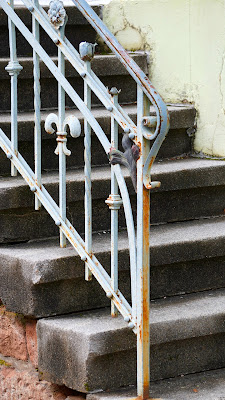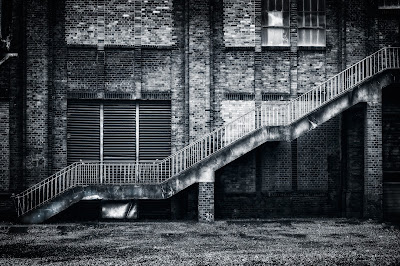There are many reasons why homeowners choose to install steel handrails and stair railing systems. They are used for safety purposes, to protect people from slipping or falling, and to provide a sense of security. They are also excellent for adding extra protection against intruders.
A lot of homeowners can’t afford the price tag on these railing systems, which is why they often opt for prefabricated metal rails that are less expensive. These prefabricated rails may not last as long as the custom-made ones because they are made with thinner steel, but they can be installed without any professional help and they use less space in your home since the railings come in single lengths rather than multiple lengths like custom-built rails do.
Handrails are one of the most important components in building a stair railing system. They are used to provide stability when people are moving up or down the stairs, and they also provide a handhold for people to use.
The parts of a handrail include the vertical post, top cap, intermediate pieces, baseboard caps, and balusters. The vertical posts are made from aluminum or steel tubing that is bolted to the wall at intervals to make sure that they don't fall over. Top caps come in various shapes and finishes including round, square, octagonal, and rectangular. Intermediate pieces can be placed between posts or balusters. Baseboard caps can be used on both sides of the stairs if there's no baseboard on either side of them. Balusters hold up the handrail to provide an extra safety measure that prevents people from falling off the stairs.
What is a Steel Handrail?
A steel handrail is a railing system that is used to protect people from falling down the stairs. Steel handrails are often made of steel tubes that are welded together.
A steel handrail can be mounted on the wall, which is usually done in the case of outdoor stairs or when there are other features on one or both sides of the stairs. The other alternative is to mount it on posts at the top and bottom of the stairs.
A steel handrail is a type of metal stair railing system that is typically mounted on the wall. It offers more support than traditional wood handrails and can be used for both interior and exterior applications.
The most common type of steel handrail is the L-shaped model, which is installed at the top and bottom of a staircase. However, there are other types as well including single-section, double-section, telescoping, and straight models.
Steel Handrail Installation
Stair and railing installation is a job for professionals. But in the case of an emergency, the homeowner can do it themselves with a little knowledge and preparation.
There are many types of stair railing systems available, but when it comes to steel stair rails installation there is one particular method that should be followed.
It is important to know how to install a hand railing before you start the process. It is important to know what type of railing system you are installing and the size of the stairway.
Handrails are not just for safety purposes, they also provide aesthetic value to the stairs.
The first step in installing a hand railing is to find out if your stairs need a new railing and measure the height and width of the staircase.
The next step is to pick or design a hand railing system for your staircase and buy it. You should also buy all necessary hardware such as screws, brackets, etc. The installation will depend on the type of railing system you choose but usually, it takes around 1-2 hours to install a full set of handrails on one flight of stairs.
Stainless Steel Vs. Standard Steel Handrails
Stainless steel is the superior choice because it has higher corrosion resistance, better durability, and can withstand higher temperatures.
Stainless steel is the preferred option over standard steel for many reasons. It has greater corrosion resistance, better durability, and can withstand higher temperatures than standard steel.
Stainless steel does not corrode, which makes it a good choice for handrails.
The other major advantage of stainless steel is that it lasts longer. This is because it doesn't have any corrosive properties. Stainless steel can be used to create a finish that will last for decades while standard steel only has a few years' worths of corrosion protection.
Steel Stairway Systems and What They Are Composed Of
"Stairway systems are the parts of a stairway that support the user on both sides of the treads. They are typically composed of two or more vertical members, called stringers, that span between top and bottom supporting horizontal members, called balusters."
The material used for steel stairway systems is usually steel. Steel is a strong metal which makes it perfect for stairways because it can hold heavy weights without bending too much.
Steel is also durable and resistant to weathering which makes it a great material for outdoors. This means that steel stairway systems will last longer than other materials like wood or concrete where they would need to be replaced often due to elements like water or heat.
Steel stairway systems are composed of metal railing and guard rails. They are often found in public venues, office buildings, and residential buildings. These systems can be installed on either concrete or steel stairs to ensure safety while walking on them.
Designing Your Own Customized Stair Railing System from Ground-Up
Designing a railing system for your stairs can be a daunting task. It requires an in-depth understanding of the factors that determine the safety and beauty of your stairs.
It is difficult to find all the necessary information on designing custom staircase railing systems to make informed decisions without spending hours on research. On top of that, it is hard to find someone who has the expertise to provide you with quality care and produce something that you will be happy with.
The first step is knowing what you want, or need, out of your railing system design. For example, do you want something simple or decorative? Do you need handrails? What are your color preferences? What's the height difference between each floor? Are there any specific aesthetic considerations like adding decorative moldings or wood details? Once you've decided on a design, we'll make sure it's built to suit your needs.
Stairs are not only used for movement but also to make the house look more elegant and spacious. You can design your stairs in a way that suits your needs and style.
Staircase riser: The size and height of the staircase should be determined by how many stairs there are and where they lead. If you're looking for a classic feel, traditional guidelines say that the riser should be 7" high and 8" deep, but this is not always possible with today's modern homes.
Balustrade: The balustrade (the railing) typically covers one or both sides of the stairway - it may also extend around corners at landings. Sometimes, it is made from wood while other times it is made from metal or glass panels to give the feeling of openness. You should ask what material they prefer before beginning to construct your own.









0 Comments